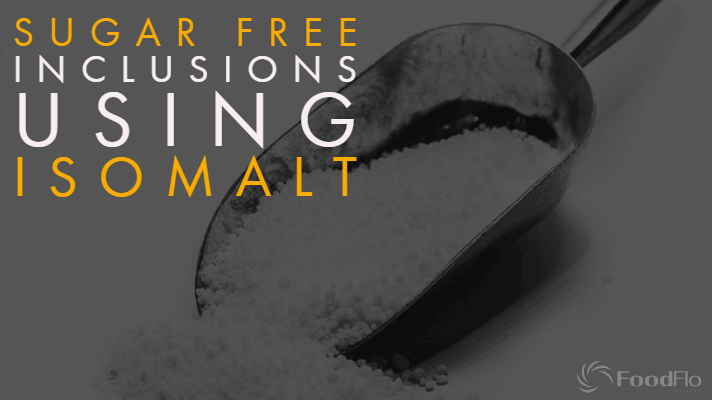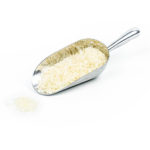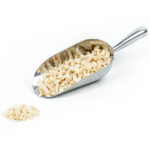
There has been a lot of interest recently in developing products with inclusions that are low sugar or sugar-free. Foodflo has been developing sugar-free options for customers for quite some time and has a range of options available, including our recently developed Sugar-Free Honeycomb Kibble.
Our popular range of sugar-free products uses isomalt instead of usual sugar or glucose in certain products. This manufactured sugar alternative has about half the calories of sugars. (source)
Sugar Free Butterscotch Kibble Coated 2-4mm
Isomalt (also known as E953 or C12h24O11) is a sugar alcohol commonly used as a substitute in sugar-free products thanks to its sugar-like physical properties while making a minimal impact on blood sugar levels (source). Isomalt is made from sugar in a two-step process and is used in more than 80 countries worldwide (source)
We work with isomalt in a similar way to sugar as part of our hard boiled/kibbled ranges. Thanks to the features of the products, there is less natural caramelisation and inversion, making for high-quality colour clarity and low hygroscopic behaviour. For this same purpose, professional bakers and sugar artists use isomalt as part of their complex creations, as well as home cooks for the “glasswork” inside of snow globe/stained glass cookies.
“This means that not only can our team create a range of great looking inclusions with a texture similar to a traditional sugar-based inclusion, but with the added benefit of a “less sweet” intensity compared to sugar.” Says Terry Cox, FoodFlo International Technical Manager.
Sugar Free Honeycomb Kibble 2-8mm Coated
Isomalt based inclusions are positioned to showcase the desired flavour rather than the “sweetness” of the ingredient itself in a sugar-based option.
With zero net carbs, it is a popular choice for use in sports nutritional snacks as the traditional chip since only about 10% of the ingested isomalt is digested into various sugars in the intestines. (source)


